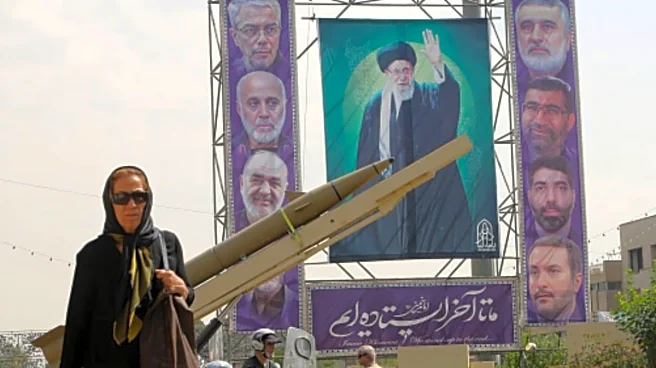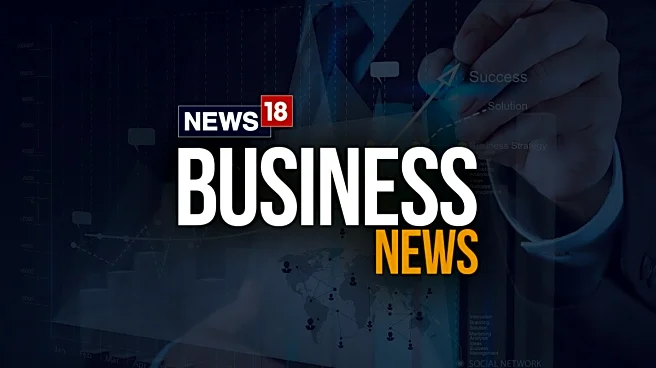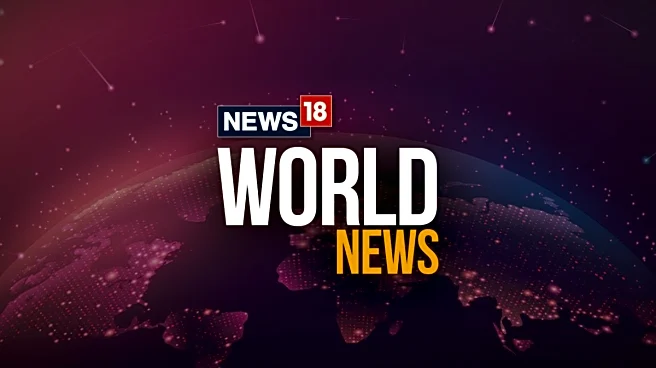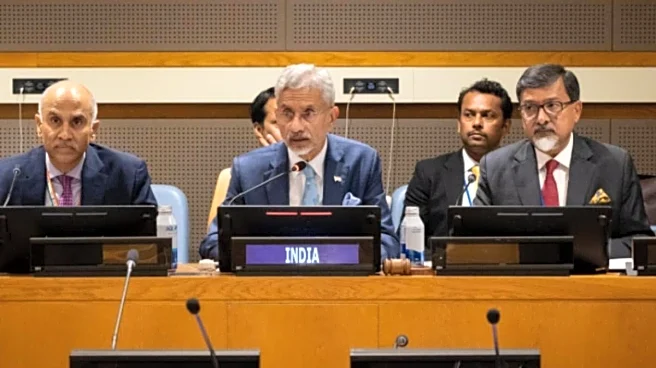Iran is once again in the crosshairs of sweeping international sanctions. On September 29, the United Nations moved to reinstate penalties on Tehran after nuclear talks collapsed. The “snapback” mechanism — a provision built into the 2015 nuclear agreement — was re-imposed on Iran after repeated violations and stalled diplomacy.
The measures, covering everything from oil exports to weapons transfers, are among the harshest Iran has faced in years. For a country already reeling from inflation, unemployment, and widespread protests, the sanctions strike at the heart of its economy. But the fallout will not be limited to Iran. The decision carries major implications for energy markets, regional stability, and the delicate balance of power in the Middle
East.
Let us understand the history of the US-Iran conflict, how sanctions became the West’s weapon of choice, what the new restrictions cover, and how they could reshape Iran’s economy and the wider region.
A Brief History Of Iran’s Sanctions
The roots of US-Iran tensions stretch back to the 1979 Islamic Revolution, when the overthrow of the Shah — a key American ally — and the seizure of the US embassy in Tehran poisoned relations. Fifty-two US diplomats were held hostage for 444 days, leading to Washington severing ties and imposing its first wave of sanctions.
During the Iran-Iraq War (1980–88), the US tilted towards Iraq, further straining relations with Iran. Tehran’s designation as a state sponsor of terrorism in 1984 cemented its pariah status. Throughout the decade, sanctions restricted weapons sales, access to technology, and trade.
In the 1990s, Western intelligence agencies flagged Iran’s nuclear ambitions. Iran insisted its programme was peaceful, but enrichment facilities suggested otherwise. The US Congress passed sweeping laws penalising foreign companies investing in Iran’s oil and gas sector. Europe followed with targeted restrictions.
By the mid-2000s, revelations about secret nuclear facilities at Natanz and Arak triggered alarm. The UN Security Council imposed sanctions in 2006, targeting nuclear materials and military technology. Additional rounds followed, restricting Iran’s banking system and slashing oil sales.
After years of a stand-off, diplomacy produced the Joint Comprehensive Plan of Action (JCPOA) in 2015. Iran agreed to cap enrichment, reduce centrifuges, and allow inspectors in exchange for sanctions relief. Billions of dollars in frozen assets were released, and foreign companies re-entered Iran’s market.
In 2018, the US unilaterally withdrew from the JCPOA, re-imposing harsh sanctions under a “maximum pressure” campaign. Iran responded by gradually breaching nuclear limits. European powers tried to salvage the deal, but progress was slow. By 2025, with trust depleted and enrichment expanded, diplomacy had ground to a halt.
How Does The ‘Snapback’ Mechanism Work?
The JCPOA included a unique mechanism to prevent Iran from backsliding: the “snapback.” If one of the signatories claimed Iran was violating its commitments, sanctions could automatically reapply after a set period unless the UN Security Council voted to block them. Because permanent members could not veto this re-imposition, the mechanism was considered a powerful enforcement tool.
In September 2025, after inspectors reported limited access and Iran refused to scale back enrichment, European countries initiated the process. The United Nations Security Council failed to stop it, and the sanctions are now back in force.
What’s Included In The New Sanctions?
The reinstated sanctions are extensive, targeting multiple sectors of Iran’s economy and state apparatus. Key provisions include:
Arms Embargo: Iran is banned from buying or selling weapons, missiles, and related technology.
Oil Restrictions: Exports face tighter monitoring, with penalties for buyers who ignore the embargo.
Financial System Freeze: Iranian banks and officials lose access to global markets. Assets abroad are frozen.
Travel Bans: Key military and political figures cannot enter UN member states.
Technology Curbs: Dual-use equipment that could aid nuclear development is off-limits.
Together, these measures strike at Iran’s primary sources of revenue and its ability to modernise its infrastructure.
What Is The Status Of Iran’s Economy?
Iran entered this round of sanctions in a weakened state. Years of partial restrictions, coupled with mismanagement, corruption, and political instability, have left the economy vulnerable:
Inflation: Double-digit inflation has eroded purchasing power. Basic goods are increasingly unaffordable.
Currency Crisis: The Rial has steadily lost value, making imports costly.
Unemployment: Young Iranians face limited job prospects, causing discontent.
Debt and Subsidies: The government struggles to finance subsidies for fuel, bread, and utilities.
Oil Dependency: Despite efforts to diversify, oil remains the lifeblood of the Iranian economy.
The snapback deepens these structural weaknesses.
What Is The Expected Fallout Of Sanctions?
Iran’s oil minister Mohsen Paknejad highlighted, as quoted by Argus, an organisation that provides data on global energy and market intelligence, “If you read the provisions of snapback, there is no discussion directly related to the sale of oil, but rather restrictions in other areas like commercial, financial, or maritime transportation… If snapback is reactivated, yes, that may cause some hardships. But we will implement our own countermeasures in due course.”
Oil Exports In Jeopardy: Iran’s oil is its most valuable asset, but buyers may now face penalties for imports. Countries that previously skirted sanctions could reduce purchases. This cuts state revenue and foreign currency reserves.
Rising Inflation: With fewer exports and reduced access to global banking, Iran will struggle to import goods. Prices for food, medicine, and fuel could skyrocket.
Banking Paralysis: Global banks, wary of penalties, are likely to pause Iranian transactions. This affects trade and complicates humanitarian imports.
Investor Exodus: Foreign companies that had cautiously re-entered Iran will likely exit, depriving the country of technology and investment.
Humanitarian Strain: Although sanctions officially exempt medicine and food, in practice, financial barriers often restrict access. Ordinary citizens may bear the heaviest burden.
How Iran Might Respond To Curbs?
Iran has a history of adapting to sanctions through both resistance and evasion. Possible strategies under the leadership of Seyyed Ali Hosseini Khamenei include:
Defiance: The country could continue its uranium enrichment programme, and restrict inspector access, as a sign of resistance to the West.
Smuggling: Iran could use ghost ships, barter systems, and third-party intermediaries to sell its oil.
Pivot To Asia: Iran could strengthen ties with China, Russia, and regional allies to bypass Western restrictions.
Proxy Leverage: Sanctions could pivot Iran to increase support for groups in Lebanon, Iraq, and Yemen to pressure adversaries.
Domestic Crackdown: Suppress dissent and protests as economic pain deepens.
Regional And Global Implications
The sanctions reverberate far beyond Iran’s borders.
Energy Prices: Reduced Iranian crude could tighten supply, nudging global oil prices upward.
Gulf Security: Tensions with Saudi Arabia, Israel, and US forces in the Gulf could escalate.
Neighbouring Economies: Iraq, Afghanistan, and the Central Asian states reliant on Iranian trade may feel the pinch.
Global Diplomacy: The sanctions test unity among world powers. Some states may quietly resist enforcement.
What’s Next?
One unusual aspect of the snapback is timing. The JCPOA’s snapback clause formally expires in October. That means this round of sanctions may be the last under the UN framework, unless new international agreements are forged.
This gives Iran and global powers a narrow window: Either sanctions force Tehran back to the negotiating table, or the standoff hardens into prolonged isolation.
While policymakers debate strategy, Iranian citizens will feel the consequences most sharply. Families already stretched by high prices will see costs climb further. Access to imported medicine and specialised medical equipment could worsen. The middle class, once a pillar of reform movements, risks further erosion, leaving society more polarised between elites and the poor.
For younger Iranians — more than half the population is under 35 — the promise of opportunity continues to dim. Sanctions often strengthen hardliners rather than weaken them, as leaders blame external enemies for domestic hardship.
Thus, the return of UN sanctions marks a pivotal moment in the long-running saga of Iran’s nuclear ambitions and its fraught relationship with the West. The measures target Iran’s economy at a time of deep fragility, aiming to push Tehran back toward compliance. But sanctions are a blunt instrument: they punish governments, yet often weigh most heavily on ordinary people.
Whether these penalties succeed in changing Iran’s calculus or merely deepen its isolation remains to be seen. What is clear is that the ripple effects — on energy markets, regional security, and diplomatic alignments — will extend far beyond Iran’s borders.





/images/ppid_59c68470-image-175911010940497656.webp)

/images/ppid_a911dc6a-image-175907687176539702.webp)



/images/ppid_59c68470-image-175920008419316435.webp)



/images/ppid_59c68470-image-175905253447490773.webp)
